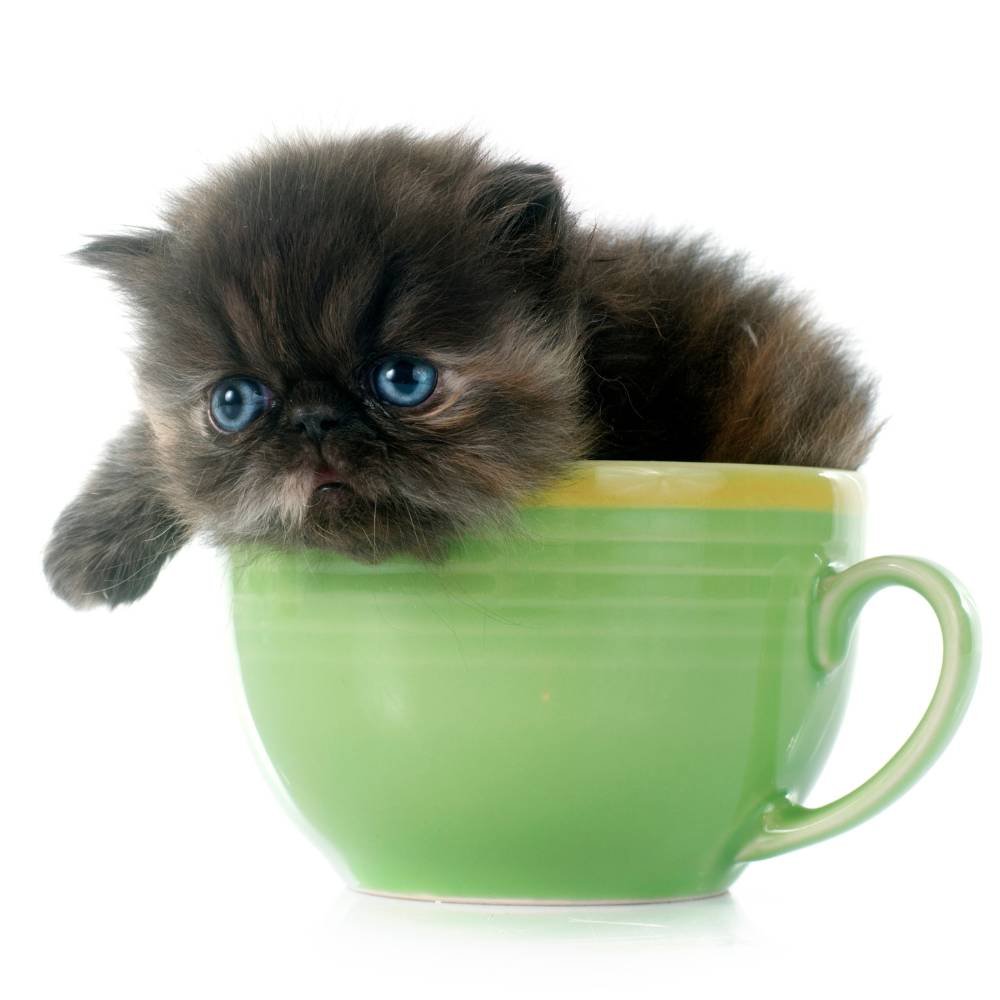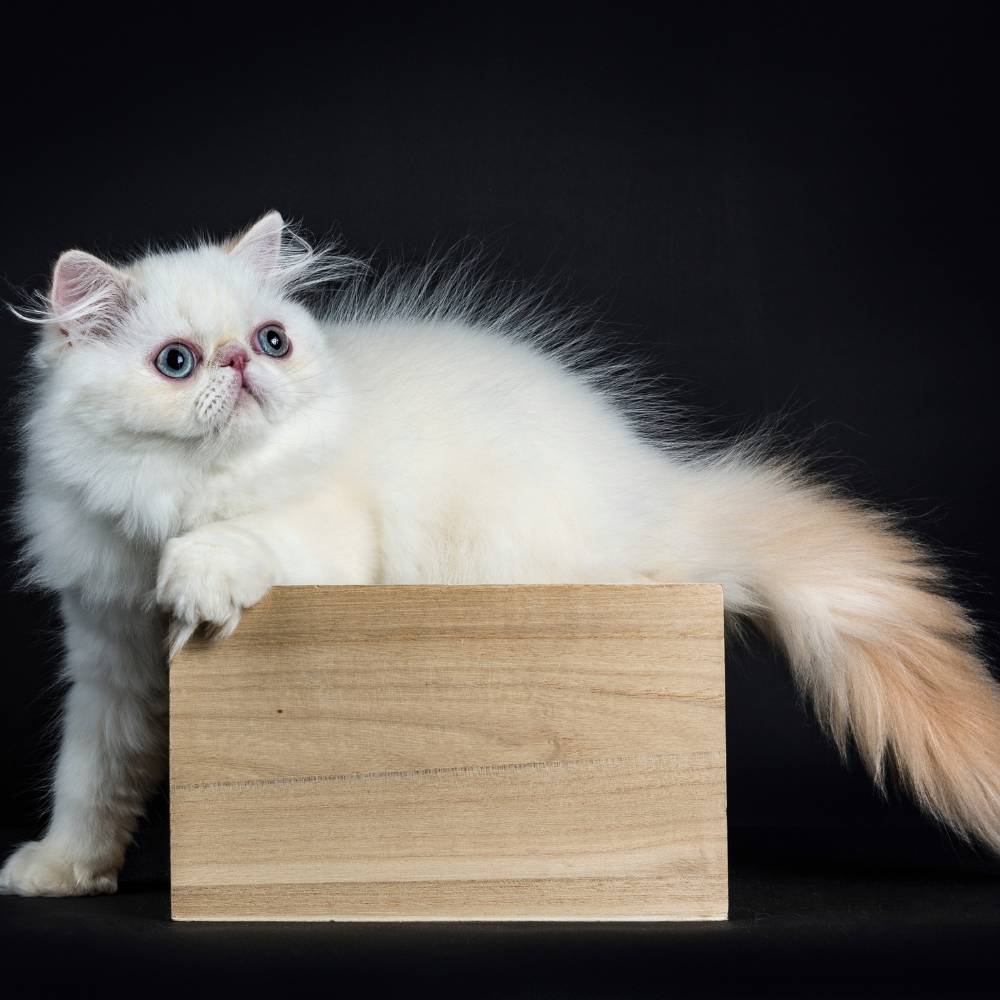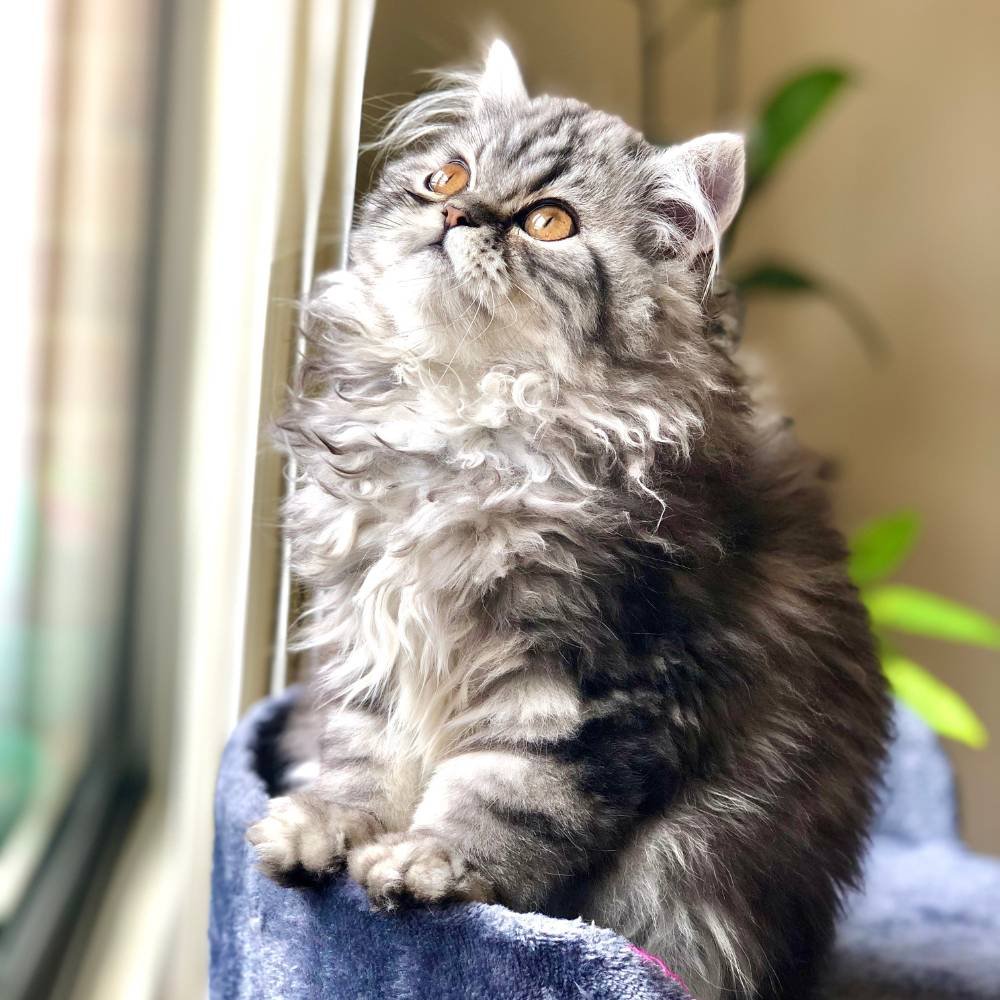
What is a Teacup Persian cat? They are a miniature version of the standard-sized Persian cat. So, if you’re considering adding a teacup Persian cat to your family, read on!
History of Teacup Persian Cats
The teacup Persian cat is a recent development in Persian cats. These pint-sized kitties were first bred in the early 1990s to create a smaller, more manageable version of the traditional Persian cat.
American Cat Fanciers’ Association (CFA) officially recognized these tiny cats in 1993. While they may be small, teacup Persians are just as sweet and affectionate as their larger counterparts.
Unfortunately, Teacup Persian cats are still relatively rare today and are often considered a premium breed among purebreds. These cats tend to be expensive and sometimes hard to find.
What are Teacup Persian cats?
A Teacup Persian cat is bred to be as small as possible, and while their size may vary, they usually weigh between 4 to 6 pounds and up to 10 because genetics isn’t an exact science.
Unlike the munchkin, these cats are only bred for a smaller size, not to make their legs shorter. So they are mini copies of the standard-sized Persian cat.
Their name is misleading as they don’t fit in teacups, but they come in smaller sizes to where some people say they’re the size of a teacup. According to the Doll Face Persian Kittens cattery, this is a descriptive term only. It’s not the description of these cats’ actual sizes.

Teacup Persian Cats – Some Facts
Several advantages come with these pint-sized kitties when you’re considering adding a teacup Persian cat to your family.
Appearance
Teacup Persians are simply adorable. Teacup Persians have the same long, flowing fur as larger Persians –stunning.
Teacup Persian cats also have signature flat faces and large eyes, giving them an adorable look that’s hard to resist.
Size
Size is one of the best features for Teacup Persian cats. They are small, adorable, and fluffy. The smallest breed in this cat family has a weight that can reach ten pounds. That makes them desirable pets for those who live in smaller apartments or homes, as they do not need much space to move around and play.
Personality
Teacup Persians are typically very easygoing and low-maintenance cats. They’re content to lounge around the house all day and don’t require a lot of exercise or playtime.
They’re also intelligent and independent, making them great for pet parents who work long hours or travel frequently. These kitties can entertain themselves without your help. They do well with other pets in the home, so if you have a busy household full of furry friends, teacup Persians are a good fit for you.
Health Issues
Teacup Persians tend to have more health concerns than other cat breeds, which is also a concern in the standard-sized Persian cat.
These health issues can include:
- Progressive retinal atrophy
- Polycystic kidney disease
- Hypertrophic cardiomyopathy
- Liver shunts
- Cystitis (bladder infections)
- Bladder stones
- Breathing problems
- Dental disease
- Cancer
- Haircoat disorder
- Arthritis
- Eye problems
However, it would help if you didn’t let this dissuade you from getting a Persian cat. You should know that your life with a Persian cat may mean more vet visits and possibly more money than other breeds. If you are knowledgeable and willing to take that responsibility, get your fluffy, long-haired kitty.

Price
Because teacup Persians are still considered a rare breed, their cost tends to be higher than other purebred cats, including standard Persian cats. You can expect to pay anywhere from $1000 (£794) to $4000 (£3200) for a teacup Persian.
Grooming Needs
As with all long-haired cat breeds, teacup Persians require regular grooming to keep their coats healthy and free of mats and tangles.
Lifespan
The average lifespan of your Teacup Persian depends on its overall health, genetics, and lifestyle. Teacup Persians have the same lifespan as the standard Persians. As stated, these cats are only smaller versions of the larger, traditional breed.
Exercise
Teacup Persians are playful and active cats like any other cat. Give your Teacup Persian plenty of room to run around in if possible.
Diet
Teacup Persians need a diet high in protein and low in carbohydrates. This type of diet will help keep them healthy. You can buy a pre-made diet specifically for Teacup Persians or make your own by mixing boiled chicken with a bit of water. Be sure to give your cat access to fresh water at all times.
Regular Checkups
They are prone to respiratory problems and joint issues, so it’s essential to make sure that you take your Teacup Persian to the vet for regular checkups.
Where to Find a Teacup Persian Cat
If you want to add a teacup Persian cat to your family, there are a few places to find one. You can either adopt or buy from a breeder—however, research before buying from a breeder, as not all breeders are created equal.
When adopting a teacup Persian, ask as many questions as possible about the cat’s health and genetic history. That is especially important if you’re considering getting a kitten, as they may have already been exposed to some everyday health problems in this breed.
If you buy from a breeder, ensure they are a CFA member (Cat Fanciers Association).

Conclusion
What did we learn about Teacup Persian cats? We learned that the teacup Persian cat is a smaller version of the standard Persian cat. They are not the size of a teacup, as the name implies. That myth is propagated to excite people about having something unique and fake. We also learned that you’ll pay much more for them because they are smaller than the standard Persian. Are they worth the price? I’m not sure. What do you all think? Leave us a comment. We’d love to hear from you.